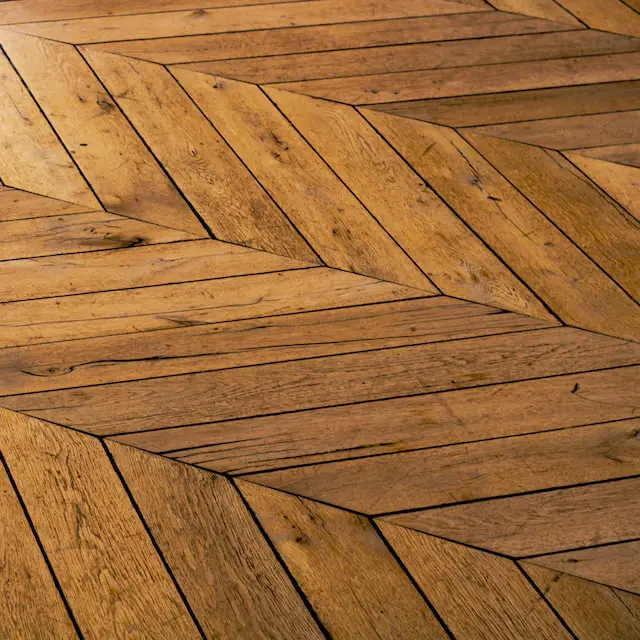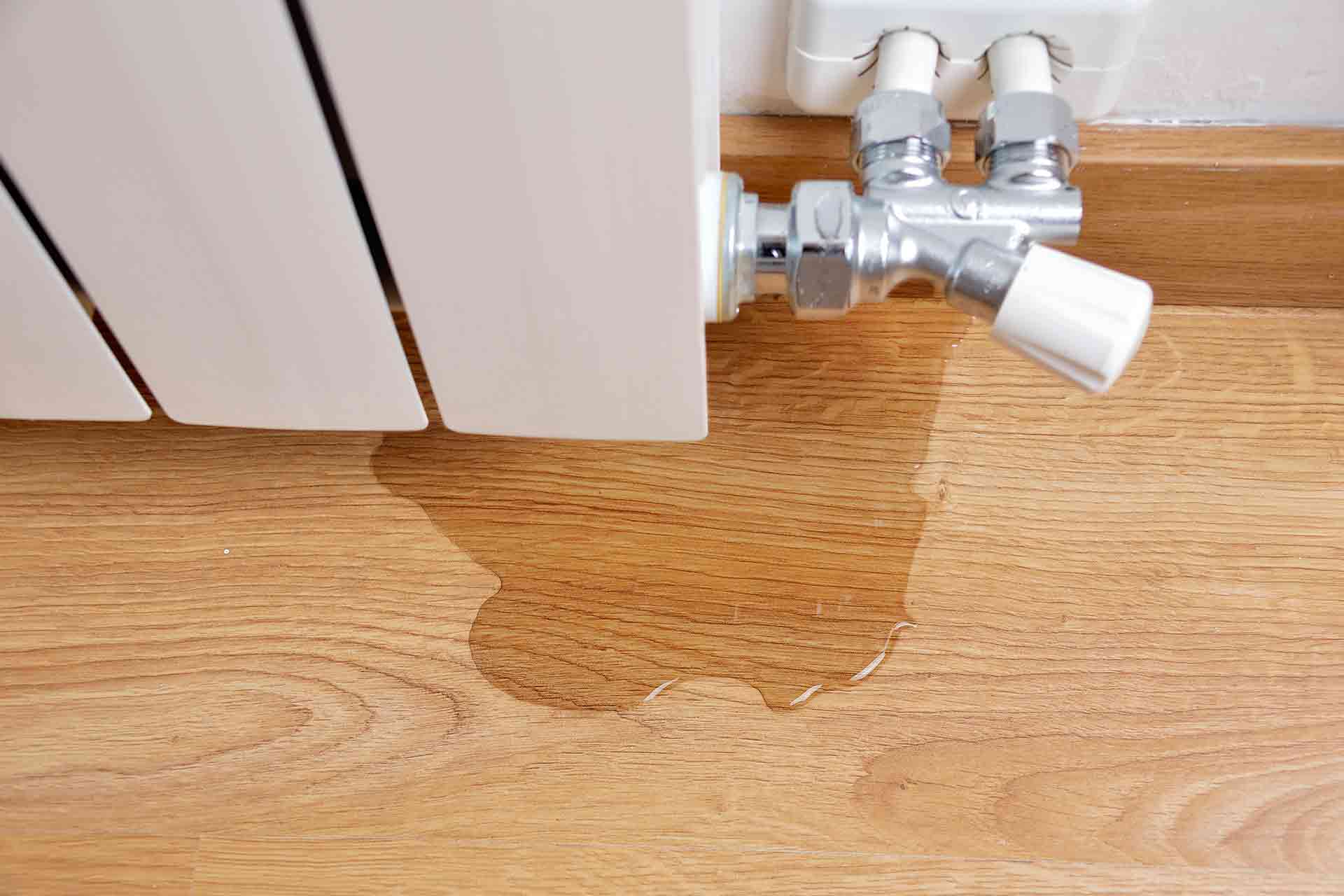What are the most common signs of water damage under floor?
The number-one enemy of wooden floors is water. The natural composition of wood causes it to react to external influences like sunlight and moisture.
The longer wood is exposed to moisture, the more damage it will incur. Between leaks from pipes and accidental drink spills, many occurrences can cause potential water damage under your floors, requiring you to either replace your foundation or undergo extensive floor maintenance.
When it comes to water-damaged floors, prevention tops restoration any day.
If you come home to a leaky appliance or the aftermath of a flood, how do you know if your floors are damaged?
Even though polyurethane is the common finish applied to hardwood flooring because of its protective effect, no hardwood floor is ‘waterproof’, no matter the layers of coating used.
This guide will tell you all about how water damages wood, signs of water damage under wooden floors, and how to salvage such situations.
How Does Water Damage Wooden Floors?

Wood is naturally porous and can easily absorb moisture. This simply means, over time, exposure to water will permeate the wood’s membranes causing it to soften, rot and fall apart.
In addition, water compromises the structure of wood leading to mold growth.
This further deteriorates the wood. While a splash from a spilled drink may not do much, excessive moisture from a burst pipe, flooding, or using too much water to clean your floors will quickly do some lasting damage to your wooden floors.
But trees don’t get damaged even after decades of exposure to rain and moisture. Yes, this is because while a tree is alive, it has bark, waxy coatings, and resins to keep moisture out when it rains.
Your wooden floors have been cut, sanded, and processed. And thus, wooden floors don’t have the same protection that trees have. So, it absorbs water instead of repelling it.
Wood cells absorb water both in their liquid form as well as water vapor in the air.
But some wood is more porous than others or more rot-resistant. Different types of wood have varied pore sizes. If water is spilled on wood with bigger pores, the wood is at more risk of water damage than non-porous wood. [1]
- Open-Grain Woods
They have the largest pores and absorb moisture the easiest. Examples are Oak, Ash, Hickory, and Maple.
- Close-Grained Wood
They don’t absorb water as easily as open-grain woods. Thus, they’re less likely to become damaged from a water spill.
Haven’t you wondered why Japanese bathrooms contain so much wood but are still in good shape?
This is because they use close-grained woods like the Hinoki cypress. Others include Pine, Cherry, Cypress, and Cedar. [2]
Signs of Water Damage Under Floor

Water always travels to the lowest spot it can. This means even if you can’t see any water or moisture on the floor’s surface, water may still have seeped underneath the floorboards into your subfloor.
This water will take a long time to dry out because the subfloor is not exposed to ventilation.
Subfloors are of two major types, concrete, and wood. Concrete subfloors rarely get damaged by a flood because of their structural integrity. But wooden subfloors are most likely affected whenever water soaks them. [3]
If the subflooring is damaged, you will need to remove the floor on top of the subfloor. In most cases, subfloors cannot be salvaged after extensive water damage.
Look for water damage on the top of your flooring, the body of the floor, the fastening system, and the subfloor. The signs of water damage can vary from floor type to floor type. The signs in different floor types are as follows:
- Laminate flooring: Separation between planks, warping, splitting, and moldy spots.
- Hardwood flooring: Discoloration, mold, cupping, or swelling of boards.
- Vinyl and Linoleum flooring: Bubbling, opening seams, and mold.
- Tiled flooring: Loose tiles, mold between tiles, and a hollow sound when the tiles are stepped upon.
- Warping
This happens when the moisture level in a piece of wood changes unevenly. One area dries and then shrinks faster than others, causing warping. Applying moisture and heat to the other side of the wood can unwarp wood.
- Buckling, Crowning, or Crippling
Moisture can force your wooden boards together, and you may see them sticking up or forming a hill. Individual panels may also stick out.
- Splitting and Cracking
When wood absorbs moisture, it expands. When it dries, it shrinks back to its standard size. This shrinkage can then cause the wood to split and crack.
Unfortunately, once your wooden floors have split and cracked, there is little else you can do apart from filling in the cracks. A sealant, varnish, or wax can help prevent cracking.
- Blistered or peeling finish
Blistering is called bubbling. It happens when the top coat separates from the coats underneath. This blistering is also a sign of water damage under wooden floors.
- Squeaky Areas of the Floor
Movement is the cause behind all squeaky floors. Water damage can cause the panels to loosen up making them squeak whenever they are stepped upon.
- Delaminating Layers of Flooring Boards
Delamination occurs when the flooring’s top layer begins to separate from the core. The floorboards might bubble or the top part might peel back from the edges.
- Discoloration
I’m sure we’ve all experienced putting down a glass or cold bottle of water and lifting it to uncover a ring. This discoloration is usually present until the water evaporates.
However, if your floors are made of stained wood, there’s always the chance that it could be permanent.
As the absorbed water in the wood dries and evaporates, it leaves washed-out minerals and salts behind, creating stains and dark patches on your floors.
- Mold
Mold loves wet wood because damp environments are a breeding ground for fungi. According to the Environmental Protection Agency, it is virtually impossible to get rid of all mold spores indoors.
The only thing you can do is prevent and control. This can be done by reducing condensation and indoor humidity to below 60%. Mold will only grow in a wet area, don’t wait up to 24-48 hours to clean up a spill.
Mold can appear in numerous forms ranging from black splotches to white furry patches on the surface of your floorboards. They typically release a musty aroma causing a room to feel thick and damp. [4]
- Rot
The type of fungi that causes wood to rot is saprophytic. That is, it eats decayed wood. Decay fungi need moisture to survive.
So, if their spores are present in your wood and it gets exposed to sufficient water, they’ll chow down. Luckily, most floors are made of rot-resistant woods like Teak, Rosewood, Oak, Redwood, and Cedar. [5]
- Pests
Several pests love to feast on wood, especially rotting wood. Termites are the most well-known insect in this category. Others are Carpenter Ants and Powderpost Beetles.
Because of their love for damp and rotting wood, you can start by checking the floor around damp areas in your home like in the bathroom or around your sink or dishwater
What do I do After a Flood or Major Water Leak?
First, identify the source of the leak. Then, stop the water from coming in as soon as you can. You may need to call a plumber if you can’t do that yourself.
The next step is to dry out your floor. Mop up the excess water using a dry towel leaving no moisture behind. Open as many windows as possible, and if you have a fan or dehumidifier, try to reduce the humidity in the room.
It’s very advisable to call a flooring professional who can test the moisture content of your floors to determine if the wood is damaged and the extent of the damage.
Read Also: Basement Flood Clean-Up Guide
How to Prevent Damage to Wooden Floors?

- Always Keep the Wood Dry
You can’t always avoid liquid spills, but when it occurs, quickly mop it up. Use a dry material to pat the floor dry immediately. It will help if you place a rug in an area more prone to spillage.
For example, if your ice maker throws ice all over your floor, put a rug in front of your refrigerator.
- Check for Damage Regularly
Be conscious of the fact that your wooden floors are not water-proof and be on the lookout for signs of wood damage. If you can pick up these signs early, you may be able to fix the damage or in the worst-case scenario, salvage the floors.
- Monitor humidity levels
Humidity is the measure of how much moisture is in the air. Use a dehumidifier, especially in rooms like bathrooms that stay damp. Open windows, air conditioners, and fans can also help reduce humidity.
- Use Water Sealant and Waxes
Wax provides the wood with protection. Consider using a water sealant or wax to protect your flooring from moisture. Water Sealants tend to last longer than waxes.
Read Also: Teflon Tape vs Thread Sealant
Final Thoughts
Water and wood are a bad combination. Water damage is the most frequent cause of many floor replacements. Wooden floors can withstand light spills, but their hardiness is tested during extensive or prolonged damage.
But water-damaged floors are only sometimes condemned!
The key is to pick up the damage early enough and prevent extensive damage.

Michael Davis is a heating & plumbing expert who currently works as independent contractor in SC. He also writes for Plumbertip.
For almost 10 years he worked on various plumbing tasks across South Carolina.



